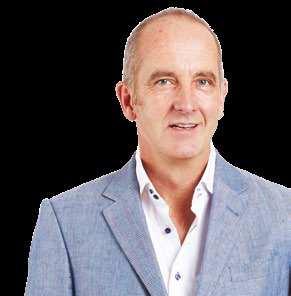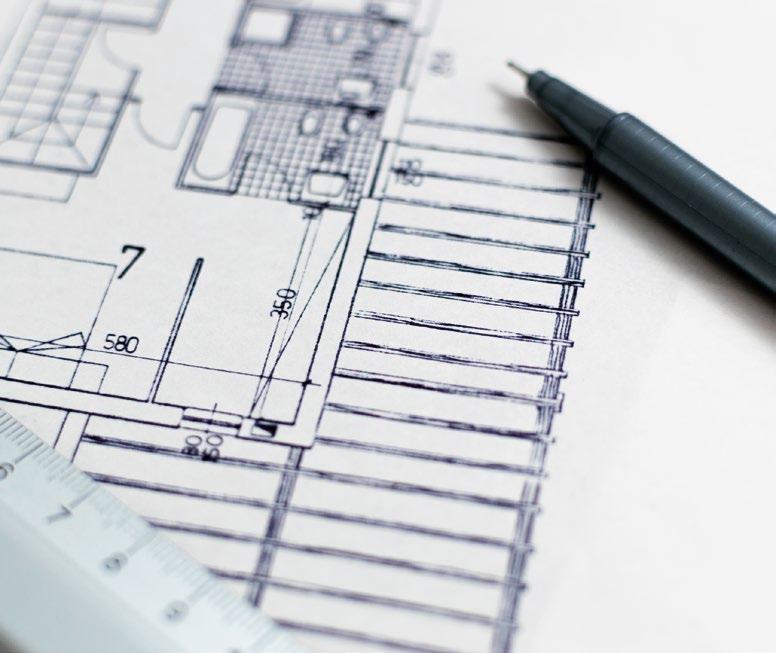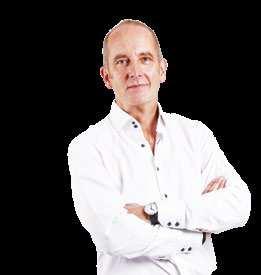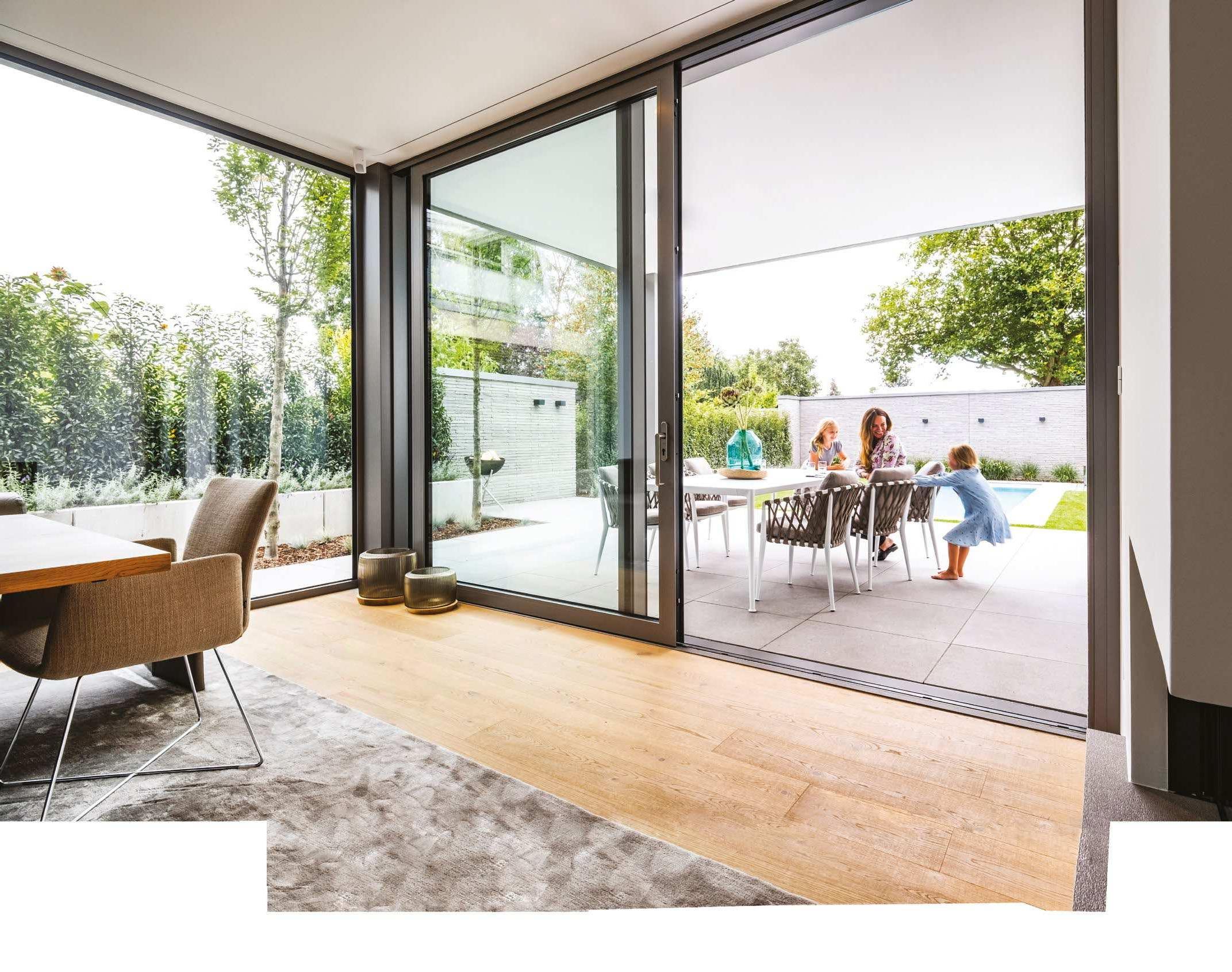
6 minute read
KEVIN McCLOUD Our editor-at
from Jjyukjj
Kevin McCloud
Get the language right and there’s no room to misinterpret the meaning of fine buildings, says our editor-at-large
Advertisement
here’s a rule of thumb in the
Tmilitary that when you issue an order you ask the recipient to repeat it back. This way you can check whether they were listening and whether they understood what you were saying. It can all go wrong. That’s the basis of so much human tragedy, and so much comedy too. In one of the Pink Panther films Peter Sellers’ Inspector Clouseau asks a man, ‘Do you know the way to the Palace hotel?’ ‘Yes,’ the man replies, and walks off.
Clouseau specialises in misinterpretation. He is French, and pretty well everyone else isn’t. Even the other French characters speak clearer English. My favourite moment is when a villain speeds off in a car down the street and Clouseau runs up to a taxi. About to get in, he shouts through the window, ‘Follow that car!’ The taxi driver gets out and runs off in pursuit, leaving Clouseau on the pavement.
Verbal misinterpretation can happen in many places: in your brain, between your brain and mouth, between the listener’s ears and their brain and, weirdly, in the ether between you. It happens for many reasons: predispositions, wilfulness, emotional or information overload and stupidity. It also happens because of the conceptual limitations of language and changes in the usage of words over time. Today, ‘sublime’ means ‘very beautiful’. Its chemistry-related definition, derived from the process of sublimation, is irrelevant to most of us. As for its 19th-century romantic definition of an effect of inspiration mixed with awe or terror, forget that. Even awesome has a different meaning now too.
The 20th-century philosopher Ludwig Wittgenstein was suspicious of words, writing, ‘The limits of my language mean the limits of my world.’ What he should have written is, ‘I should get out more. Maybe visit an art gallery to look at some sublime 19th-century Caspar David Friedrich paintings, feed the ducks by the pond and catch an awesome movie.’ He should have examined non-verbal communication a little more, swapped a picture for a thousand words and explored a few more sensations. But who am I to tell him what to do? If I had he’d clearly have misinterpreted me.
Pictures and drawings are the first communication tools of architects and designers. We add f ly-through videos and computer graphic images to the toolbox when it comes to selling a design idea to a client or a planning committee. But the basic processes of exploring ideas and developing a mature design involve drawing and modelling. An architect friend of mine is so worried about the accuracy of his drawings in conveying an idea he always starts his first client meeting with a blunt soft pencil so his sketches stay a bit ambiguous. He prefers his pictures, at least at the beginning, to convey maybe just 50 words and one loose idea.
As an aside, making television programmes is more journalistic. The words must be honed down to convey a sequence of ideas, a story, and luckily enough there are moving pictures to go with that story. Because it is primarily a visual medium, everyone remembers the building and the people. No one remembers their names or the words. The same goes for this column. I’ll be lucky if 10 per cent of Grand Designs magazine readers have got to this point in the text. If you have, congratulations and thank you. Most of us, me included, just look at the pictures and then maybe read the captions if we’re really interested.
But even with pictures and flythrough videos there is enough potential for error and deceit to fill a Pink Panther movie. The truth is that architecture is a discipline of translation, where ideas are made manifest in tangible finished objects. Where the differing hopes,
dreams and ambitions of architects, clients and planners are turned into tangible things. So there’s plenty of room for miscommunication and the misalignment of views. This is where emotional attachments come to the fore and the potential for disagreement and disappointment is highest.
And so, to avoid the disappointment, architects turn to every communication tool they can find. As the detailed drawings are produced so the pencils are sharpened to laser precision and the words become more important. On a detailed section you might find interminable sentences that are not meant for you. They run something like this: ‘15mm board over 2mm neoprene sound deadening foam over 50x100mm joists over 200mm Supa Blocco or similar over Fabbyplacky dp membrane or similar to BS123.456778 (amended) over screed as specified by others over blinding to engineer’s specifications over rubble’. Compelling stuff with an elegant turn of phrase, one that is repeated and repeated. It presumably goes on ‘over clay subsoil over 4.5-billion-year-old carboniferous limestone over 9km x indeterminable width Earth’s crust (amended) over mantle over loads of magma or similar over iron and aluminium-rich core’.
This is technical stuff in necessary technical language. Part of what we expect from architects is the ability to communicate with drawings and models; to express the verbally inexpressible; to capture the briefs we set them and deliver them back to us as fully formed visions that can be built, as opposed to simply imagined. We also

Architects have to be masters of the pencil and the pen
Par t of what we expect from architects is the abilit y to express the verbally inexpressible
expect them to communicate to builders precisely, in detail, with words and pictures, how something is going to be constructed. They should be masters of the pencil and the pen.
So it is gratifying that those who have a sense of humour, and an ability to spin words to poetically and inspiringly bring an idea to life, are the ones to succeed. Architecture may be a highly disciplined job of arranging and reorganising technical elements, of planning layouts and sequencing, but it is no slave to numbers or materials, or even the construction process. It serves people – you and me. It is there to improve our environment and help look after us. In a built world that can be clumsily ambiguous and easily misinterpreted, the greatest buildings are those that speak to us clearly, eloquently and beautifully.

Nathan and Amye Marshall built a Dutch barn-style house in Lincolnshire ARE YOU PL ANNING A ?

TV’s Grand Designs is looking for exciting projects to feature on the programme. Does your build fit the bill? To apply, please visit granddesigns.tv















